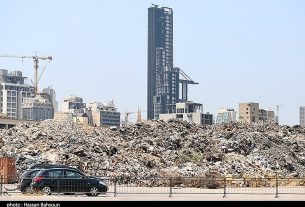By Solomon Alaka | 16/06/2025
U.S. Immigration and Customs Enforcement (ICE) has reportedly been instructed to pause worksite immigration raids targeting the agriculture, hospitality, and restaurant sectors—industries long recognized as dependent on immigrant labor. This directive marks a step toward minimizing disruption in critical supply chains and service industries. However, key sectors have been left out: healthcare and construction, both of which rely heavily on immigrant labor to serve essential national needs.
With labor shortages, an aging population, and infrastructure demands escalating, extending these protections to the health and construction sectors is a logical and necessary next step.
Immigrant Labor: The Backbone of the Health Sector
The healthcare system in the United States is deeply reliant on immigrant workers—from hospitals to care homes and assisted living facilities (ALFs). According to a 2022 analysis by the Migration Policy Institute, immigrants make up:
- 1 in 4 direct care workers (e.g., nursing aides, home health aides)
- 28% of all physicians
- 24% of dentists
- 38% of home health aides
In long-term care settings such as nursing homes and ALFs, immigrants often staff the frontlines of elder care, typically earning modest wages and working under demanding conditions. These workers are irreplaceable in an industry already grappling with chronic labor shortages.
A similar trend is visible globally. In Ireland, a government report noted that over 1,000 non-EU health assistants, mostly from India and the Philippines, were recruited to work in private nursing homes through work permit schemes, yet many are barred from family reunification due to income restrictions. (BreakingNews.ie)
Construction: The Immigrant-Driven Engine of Growth
Construction is another industry deeply reliant on immigrant workers. The U.S. Bureau of Labor Statistics reports that more than 30% of construction laborers are foreign-born, with undocumented workers making up a significant portion in states such as Texas, California, and Florida.
These workers are responsible for building housing, roads, hospitals, and schools—the very infrastructure that keeps the country running. According to a 2023 National Association of Home Builders report, immigrant labor accounts for up to 45% of construction in high-growth metro areas.
In Ireland, the number of non-Irish workers in construction grew by 84% between 2021 and 2023, reaching 27,500, in response to a dire housing crisis (The Irish Times)—a situation mirrored in many U.S. cities where affordable housing demand far outpaces supply.
Policy Gaps and Public Consequences
While ICE’s current moratorium on raids in agriculture and hospitality sectors helps stabilize those industries, omitting healthcare and construction creates inconsistencies with potentially serious consequences. A Brookings Institution report warned that stepped-up immigration enforcement in these sectors could shrink their labor force by 15–20%, with ripple effects on both economic productivity and public health.
Workers in these industries are not simply laborers—they are nurses administering life-saving medications, aides caring for the elderly, and builders constructing homes for families. Targeting them for immigration enforcement undermines national priorities in health, housing, and economic recovery.
Conclusion: Equal Protection for Essential Workers
If immigration enforcement pauses are truly about protecting the economic and functional integrity of essential industries, they must be expanded to include healthcare and construction. These sectors are not secondary—they are pillars of modern society.
The contribution of immigrant labor to America’s health and infrastructure systems is not a temporary convenience but a structural necessity. Extending leniency, protection, and recognition to these workers is not just humane—it’s strategic.
Contact the Author
For press inquiries: [email protected]



